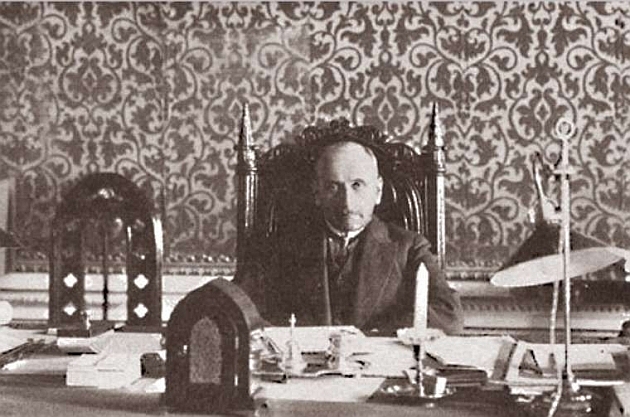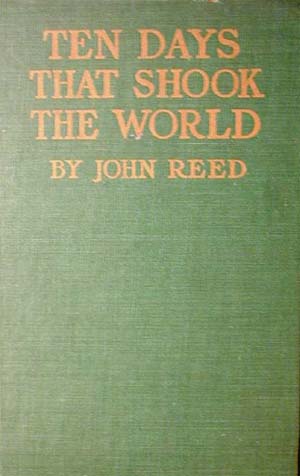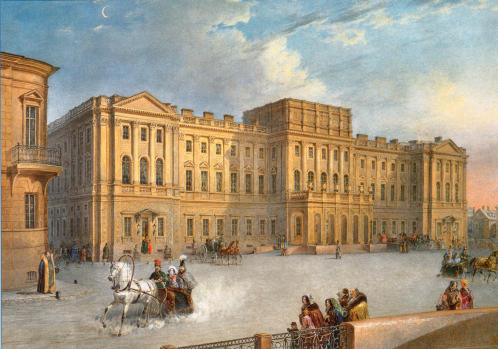|
Anatoly Neratov
Anatoly Anatolyevich Neratov (Russian: Анатолий Анатольевич Нератов) (2 October 1863 in Russia – 10 April 1938 in Villejuif, France) was a Russian diplomat and an official of the Russian foreign ministry.Архив Александра Н. Яковлева – Альманах "Россия. ХХ век" – Биографический словарь: Нератов, Анатолий Анатольевич' He was deputy to five foreign ministers of the Tsarist and the Provisional Government. Sazonov Sergey Dmitrievich (Detail).jpg, His patron Sergey Sazonov was deputized by Neratov from March to December 1911 Boris V. Shturmer.jpeg, Following Boris Stürmer's downfall in November 1916 his deputy Neratov led the foreign ministry Nikolai Pokrovsky.jpg, Nikolai Pokrovsky took over the office from Neratov and gave it back to him in February 1917 Pavel Miliukov4.gif, Pavel Milyukov took over the ministry in March 1917 but kept Neratov as his deputy mi ... [...More Info...] [...Related Items...] OR: [Wikipedia] [Google] [Baidu] |
Sergey Sazonov
Sergei Dmitryevich Sazonov GCB (Russian: Сергей Дмитриевич Сазонов; 10 August 1860 in Ryazan Governorate 11 December 1927) was a Russian statesman and diplomat who served as Foreign Minister from November 1910 to July 1916. The degree of his involvement in the events leading up to the outbreak of World War I is a matter of keen debate, with some historians putting the blame for an early and provocative mobilization squarely on Sazonov's shoulders, and others maintaining that his chief preoccupation was "to reduce the temperature of international relations, especially in the Balkans".John M. Bourne. ''Who's Who in World War One''. Routledge, 2001. . Page 259. Early career Of lesser noble background, Sazonov was the brother-in-law of Prime Minister Pyotr Stolypin, who did his best to further Sazonov's career. Having graduated from the Tsarskoye Selo Lyceum, Sazonov served in the London embassy, and the diplomatic mission to the Vatican, of which he became ... [...More Info...] [...Related Items...] OR: [Wikipedia] [Google] [Baidu] |
Iranian Constitutional Revolution
The Persian Constitutional Revolution ( fa, مشروطیت, Mashrūtiyyat, or ''Enghelāb-e Mashrūteh''), also known as the Constitutional Revolution of Iran, took place between 1905 and 1911. The revolution led to the establishment of a parliament in Persia (Iran) during the Qajar dynasty. The revolution opened the way for fundamental change in Persia, heralding the modern era. It was a period of unprecedented debate in a burgeoning press, and new economic opportunities. Many groups fought to shape the course of the revolution, and all segments of society were in some way changed by it. The old order, which King Nassereddin Shah Qajar had struggled for so long to sustain, was finally replaced by new institutions, new forms of expression, and a new social and political order. King Mozaffar ad-Din Shah Qajar signed the 1906 constitution shortly before his death. He was succeeded by Mohammad Ali Shah, who abolished the constitution and bombarded the parliament in 1908 with R ... [...More Info...] [...Related Items...] OR: [Wikipedia] [Google] [Baidu] |
Vladimir Petrovich Potemkin
Vladimir may refer to: Names * Vladimir (name) for the Bulgarian, Croatian, Czech, Macedonian, Romanian, Russian, Serbian, Slovak and Slovenian spellings of a Slavic name * Uladzimir for the Belarusian version of the name * Volodymyr for the Ukrainian version of the name * Włodzimierz (given name) for the Polish version of the name * Valdemar for the Germanic version of the name * Wladimir for an alternative spelling of the name Places * Vladimir, Russia, a city in Russia * Vladimir Oblast, a federal subject of Russia * Vladimir-Suzdal, a medieval principality * Vladimir, Ulcinj, a village in Ulcinj Municipality, Montenegro * Vladimir, Gorj, a commune in Gorj County, Romania * Vladimir, a village in Goiești Commune, Dolj County, Romania * Vladimir (river), a tributary of the Gilort in Gorj County, Romania * Volodymyr (city), a city in Ukraine Religious leaders * Metropolitan Vladimir (other), multiple * Jovan Vladimir (d. 1016), ruler of Doclea and a saint of the S ... [...More Info...] [...Related Items...] OR: [Wikipedia] [Google] [Baidu] |
Ten Days That Shook The World
''Ten Days That Shook the World'' (1919) is a book by the American journalist and socialist John Reed. Here, Reed presented a firsthand account of the 1917 Russian October Revolution. Reed followed many of the most prominent Bolsheviks closely during his time in Russia. Background John Reed was on an assignment for ''The Masses'', a magazine of socialist politics, when he was reporting on the Russian Revolution. Although Reed stated that he had "tried to see events with the eye of a conscientious reporter, interested in setting down the truth" during the time of the event, he stated in the preface that "in the struggle my sympathies were not neutral" (since the book primarily shares the perspective of the Russian working class). Before John Reed left for Russia, the Espionage Act was passed on June 15, 1917. This provided for fines and imprisonment as a punishment for interference with the recruiting of soldiers and prohibited the mailing of any newspaper or magazine that pro ... [...More Info...] [...Related Items...] OR: [Wikipedia] [Google] [Baidu] |
John Reed (journalist)
John "Jack" Silas Reed (October 22, 1887 – October 17, 1920) was an American journalist, poet, and communist activist. Reed first gained prominence as a war correspondent during the Mexican Revolution for '' Metropolitan'' and World War I for ''The Masses''. He is best known for his coverage of the October Revolution in Petrograd, Russia, which he wrote about in his 1919 book ''Ten Days That Shook the World''. Reed supported the Soviet takeover of Russia, even briefly taking up arms to join the Red Guards in 1918. He hoped for a similar Communist revolution in the United States, and co-founded the short-lived Communist Labor Party of America in 1919. He died in Moscow of spotted typhus in 1920. At the time of his death he may have soured on the Soviet leadership, but he was given a hero's burial by the Soviet Union, and is one of only three Americans buried at the Kremlin Wall Necropolis. Early life John Silas Reed was born on October 22, 1887, in his maternal grandparents' ... [...More Info...] [...Related Items...] OR: [Wikipedia] [Google] [Baidu] |
Ivan Zalkind
Ivan Abramovich Zalkind (; 1 May Diplomatic Documents of Switzerland 1848–1975: Salkind, Iwan' 1885 in Saint Petersburg,Ирошников М.П., Чубарьян А.О.: Тайное становится явным' Russia – 27 November 1928 in Leningrad,Архив Александра Н. Яковлева - Альманах "Россия. ХХ век" - Биографический словарь: Залкинд, Иван Абрамович' Soviet Union), also known as Ivan Artamonov (), was a Jewish Soviet diplomat. Originally a biologist who got his doctorate from the Sorbonne in Paris, Zalkind took part in the October Revolution on the side of Leon Trotsky. When Trotsky 1917 became People's Commissar for Foreign Affairs (''de facto'': Soviet foreign minister), he made Zalkind his first deputy (''de facto'': Permanent Under Secretary of State or Deputy Minister of Foreign Affairs).Михайловский, Георгий Николаевич: ''Записки. Из ист ... [...More Info...] [...Related Items...] OR: [Wikipedia] [Google] [Baidu] |
Council Of People's Commissars
The Councils of People's Commissars (SNK; russian: Совет народных комиссаров (СНК), ''Sovet narodnykh kommissarov''), commonly known as the ''Sovnarkom'' (Совнарком), were the highest executive authorities of the Russian Soviet Federative Socialist Republic (RSFSR), the Soviet Union (USSR), and the Soviet republics from 1917 to 1946. The Sovnarkom of the RSFSR was founded in the Russian Republic soon after the October Revolution in 1917 and its role was formalized in the 1918 Constitution of the RSFSR to be responsible to the Congress of Soviets of the RSFSR for the "general administration of the affairs of the state". Unlike its predecessor the Russian Provisional Government which had representatives of various political parties, the Sovnarkom was a government of a single party, the Bolsheviks. The Sovnarkom of the USSR and Congress of Soviets of the USSR founded in 1922 were modelled on the RSFSR system, and identical Sovnarkom bodies we ... [...More Info...] [...Related Items...] OR: [Wikipedia] [Google] [Baidu] |
Leon Trotsky
Lev Davidovich Bronstein. ( – 21 August 1940), better known as Leon Trotsky; uk, link= no, Лев Давидович Троцький; also transliterated ''Lyev'', ''Trotski'', ''Trotskij'', ''Trockij'' and ''Trotzky''. (), was a Russian Marxist revolutionary, political theorist and politician. Ideologically a Marxist, his developments to the ideology are called Trotskyism. Born to a wealthy Jewish family in Yanovka (now Bereslavka, Ukraine), Trotsky embraced Marxism after moving to Mykolaiv in 1896. In 1898, he was arrested for revolutionary activities and subsequently exiled to Siberia. He escaped from Siberia in 1902 and moved to London, where he befriended Vladimir Lenin. In 1903, he sided with Julius Martov's Mensheviks against Lenin's Bolsheviks during the Russian Social Democratic Labour Party's initial organisational split. Trotsky helped organize the failed Russian Revolution of 1905, after which he was again arrested and exiled to Siberia. He once again escape ... [...More Info...] [...Related Items...] OR: [Wikipedia] [Google] [Baidu] |
October Revolution
The October Revolution,. officially known as the Great October Socialist Revolution. in the Soviet Union, also known as the Bolshevik Revolution, was a revolution in Russia led by the Bolshevik Party of Vladimir Lenin that was a key moment in the larger Russian Revolution of 1917–1923. It was the second revolutionary change of government in Russia in 1917. It took place through an armed insurrection in Petrograd (now Saint Petersburg) on . It was the precipitating event of the Russian Civil War. The October Revolution followed and capitalized on the February Revolution earlier that year, which had overthrown the Tsarist autocracy, resulting in a liberal provisional government. The provisional government had taken power after being proclaimed by Grand Duke Michael, Tsar Nicholas II's younger brother, who declined to take power after the Tsar stepped down. During this time, urban workers began to organize into councils (soviets) wherein revolutionaries criticized the pro ... [...More Info...] [...Related Items...] OR: [Wikipedia] [Google] [Baidu] |
February Revolution
The February Revolution ( rus, Февра́льская револю́ция, r=Fevral'skaya revolyutsiya, p=fʲɪvˈralʲskəjə rʲɪvɐˈlʲutsɨjə), known in Soviet historiography as the February Bourgeois Democratic Revolution and sometimes as the March Revolution, was the first of two revolutions which took place in Russia in 1917. The main events of the revolution took place in and near Petrograd (present-day Saint Petersburg), the then-capital of Russia, where long-standing discontent with the monarchy erupted into mass protests against food rationing on 23 February Old Style (8 March New Style). Revolutionary activity lasted about eight days, involving mass demonstrations and violent armed clashes with police and gendarmes, the last loyal forces of the Russian monarchy. On 27 February O.S. (12 March N.S.) the forces of the capital's garrison sided with the revolutionaries. Three days later Tsar Nicholas II abdicated, ending Romanov dynastic rule and the Russian Empi ... [...More Info...] [...Related Items...] OR: [Wikipedia] [Google] [Baidu] |
State Council (Russian Empire)
The State Council ( rus, Госуда́рственный сове́т, p=ɡəsʊˈdarstvʲɪn(ː)ɨj sɐˈvʲet) was the supreme state advisory body to the Tsar in Imperial Russia. From 1906, it was the upper house of the parliament under the Russian Constitution of 1906. 18th century Early Tsars' Councils were small and dealt primarily with external politics. Peter I of Russia introduced the Secret Council. Catherine I of Russia introduced the Supreme Secret Council. Its role varied during different reigns. Peter III of Russia created the Imperial Council on 20 May 1762 ("Императорский Совет"), or, formally "The Council at the Highest Court" ("Совет при высочайшем дворе"). It was dismissed shortly after the succession of Catherine II of Russia. 1810–1906 The State Council was established by Alexander I of Russia in 1810 as part of Speransky's reforms. Although envisaged by Speransky as the upper chamber of the Russian parliament, ... [...More Info...] [...Related Items...] OR: [Wikipedia] [Google] [Baidu] |
Ministry Of Foreign Affairs (Russia)
The Ministry of Foreign Affairs of the Russian Federation (MFA Russia; russian: Министерство иностранных дел Российской Федерации, МИД РФ) is the central government institution charged with leading the foreign policy and foreign relations of Russia. It is a continuation of the Ministry of Foreign Affairs of the Russian Soviet Federative Socialist Republic, which was under the supervision of the Soviet Ministry of External Relations. Sergei Lavrov is the current foreign minister. Structure of the Russian Ministry of Foreign Affairs The structure of the Russian MFA central office includes divisions, which are referred to as departments. Departments are divided into sections. Russian MFA Departments are headed by Directors and their sections by Heads. According to Presidential Decree 1163 of September 11, 2007, the Ministry is divided into 39 departments. Departments are divided into territorial (relations between Russia and fo ... [...More Info...] [...Related Items...] OR: [Wikipedia] [Google] [Baidu] |



.jpg)




